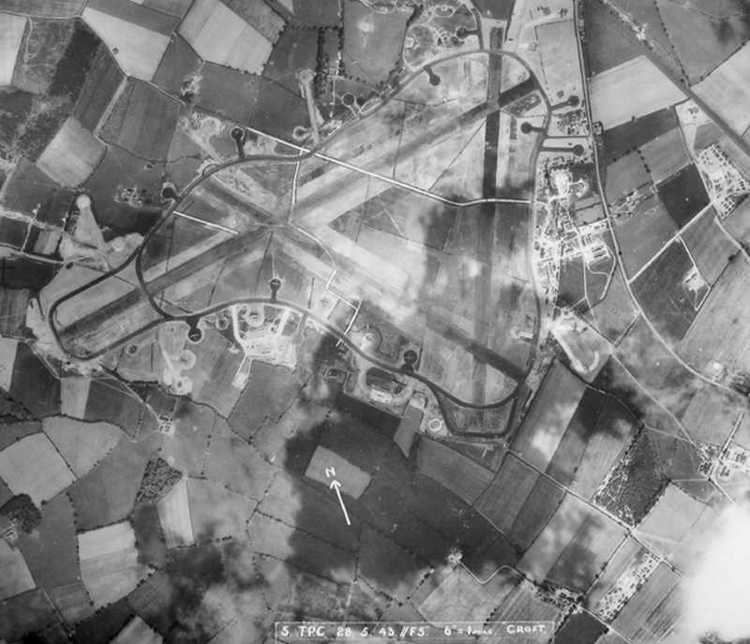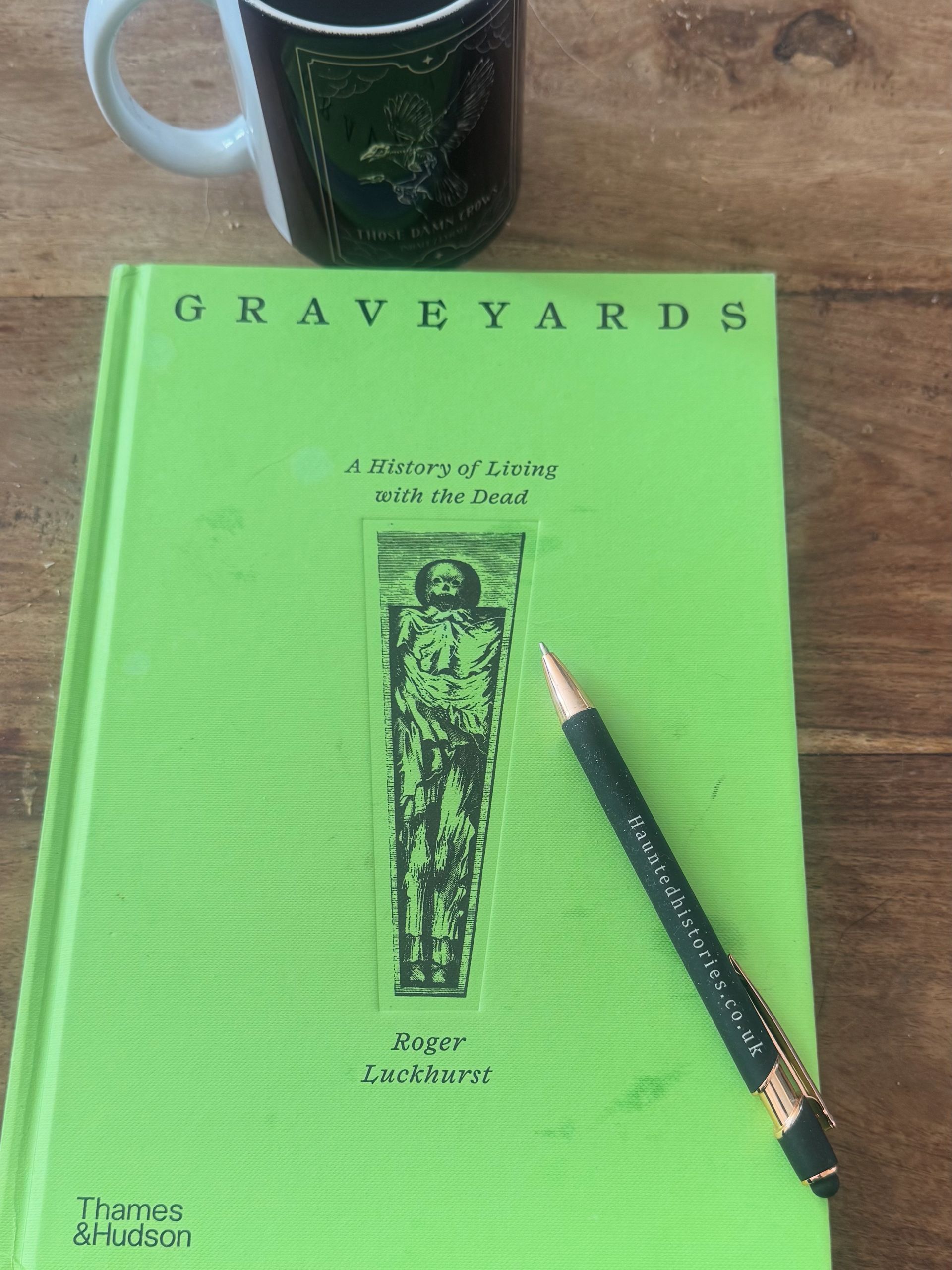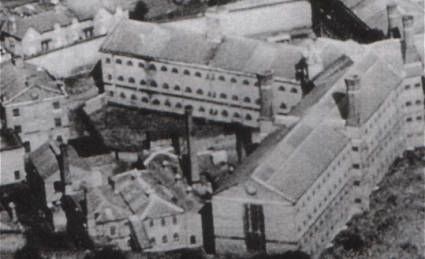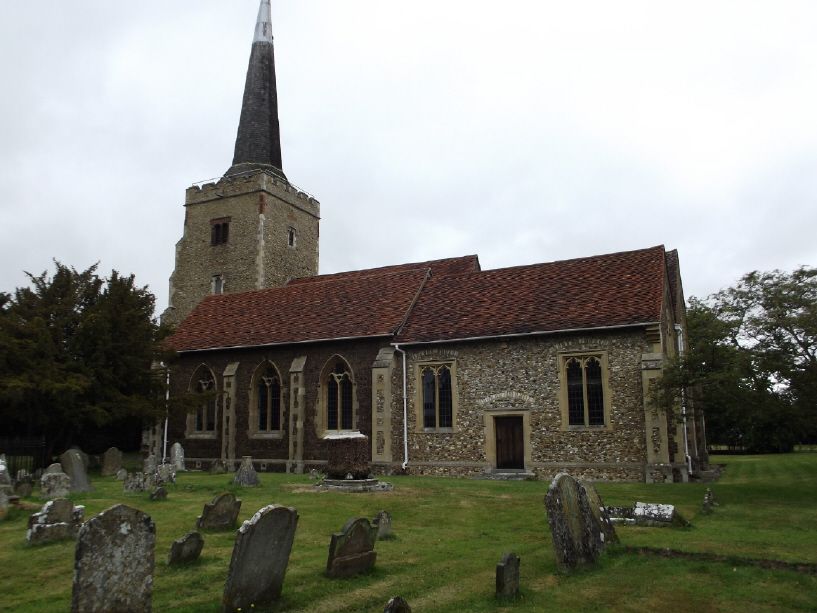Behind her eyes?
Penny Griffiths Morgan • 7 July 2021

There is a series on Netflix that has an incredible twist in it that has left many people (especially those without an interest in the supernatural) going “eh?” So, if you are planning on watching the 6 part programme called “Behind her eyes” (based on the novel by Sarah Pinborough) look away now or I cannot be held responsible for any type of plot spoiler…
Ready? Ok.
As I said in my opening paragraph, there is an element of esotericism that begins quite early on and covers something commonly known as astral projection. This type of out of body experience (O.B.E.) goes by many names depending upon the religion or belief practice that you are referring to, dream body, astral body, Buddhist light body, Egyptian kha…you get the drift. This is also not a new discovery either, there are many reports of the Ancient Egyptians embracing the idea of astral projection and drawings of this have been reportedly discovered on their properties.
Plato, the ancient Greek philosopher is also said to have written about this practice, when he had an out of body experience in the Temple of Eleusis just outside of Athens – although, it must be said, that during the Eleusinian Mysteries which was an annual festival dedicated to the cult of Demeter and Persephone, various concoctions would be imbibed which could produce certain states of hallucination.
Fast forward to the 19th century and the term “astral projection” is coined by Helena Blavatsky, founder of a fascinating belief system known as Theosophy. Looking into to background of this is at least one article in its own right, but it drew heavily from Eastern religions and was seen as part of the occultist movement of the time by many. One of the big factors in Blavatsky’s writings was the identification of the astral as being part of an individual, sitting above the physical aspect but below the mind principle, the belief being that the mind influenced the astral (vitality and energy) which then commanded the physical. So in tune with her astral portion was Blavatsky, there are reports of her being able to play pianos, and move objects without leaving her seat, her explanation being that she had separated her astral form from her body and that it was performing this supernatural feat.
In the later middle stages of the 20th century (well, 1968 to be precise), philosophy graduate Celia Green decided to explore the phenomenon of astral projection, specialising in the psychophysical world and also being a research officer for the Society of Psychical Research (from 1957 to 1960) she interviewed and published over four hundred accounts of out of body experiences (OBE), which for many included Lucid dreaming, seen to be a precursor for the ability to project out of one’s physical form.
This is just a snapshot of the history of Astral projection and O.B.E, but let’s look at some of the factors involved and provide an alternative viewpoint.
In the series that prompted me to write this piece, Adele takes a bigger interest in Louise when she finds out that she suffers with incredibly lucid dreams (the possible harbinger of projection). Recently scientists have come to the conclusion that those who suffer from this particular sleep state tend to have a larger prefrontal cortex, the part of the brain responsible for decisions and memories. Therefore, it could be reasonably surmised that these people tend to be very self-reflective and analytical, and are most likely to be reviewing things constantly in their mind.
Adele says that she can only project into a place she has seen before, which also suggests that it is memory rather than true travel.
That said, there is so much about our consciousness and sub consciousness that we do not know, anything could be possible and maybe when I dream that I am watching my children sleep, or grooming a friend’s horse, it is not my imagination and I am really there…

I am always on the look out for an interesting story to share with you all, and once I decide on a theme, old newspapers are frequently a good place to start – and this is one of those such discoveries. As many of you know, I am a total sucker for early 20 th century aviation, but sadly a large number of the accounts do not have a happy ending to them but that does not mean we should not share them I feel. The Hartlepool Northern Daily Mail on the 28 th June 1957 reported that multiple people had seen a ghost on the Middleton St George RAF base and they firmly believed it was a pilot known as Squadron Leader McMullen. So, my research started… Middleton St George was predominantly a bomber base during the second World War, home to a variety of aircraft including Wellingtons, Lancasters and Halifax’s, pretty much the who’s who of WW2 heavy bombers, and knowing as we do the amount of fatalities that these crews were met with it is perhaps not surprising that such a large number seem to want to haunt their airfield. What of McMullen? Well, there is a clue as nearby is a street named McMullen Road, was this in homage to our supposed apparition? Yes is the answer. On the 13 th January 1945, Pilot Officer William McMullen of the Royal Canadian Airforce took off in his AVRO Lancaster KB793 from Middleton on a night cross country training exercise with a crew of seven in total. The take off was normal, as was the resulting three hour flight, but as the pilot started his descent from around ten thousand feet they noticed sparks coming out of the port outer engine (Lancasters had four engines in total). Despite turning the engine off, and feathering the prop to reduce drag, the pilot gave the order to bail out but he stayed in the aircraft to try and steer it away from the densely populated area of Darlington. His actions meant that by the time he was clear of the area and over Lingfield Farm, it was too late for him to escape and he died as the Lancaster crashed. He had started his flying on the 22 nd December 1941, achieving his “wings” on 6 th November 1942 and was in his early 30’s when he lost his life. Could it be Bill that is seen walking the runways and looking at the civilian aircraft that Middleton is now home to? I have no idea, but it is somewhat interesting that the unit he belonged to, the 428 was also known as the “ghost” squadron…

One of the coolest things that has happened since I have started to make a “name” for myself is that every so often I am asked to review a new tome that is coming out. For someone who is a self-confessed book worm, the opportunity to read pieces of work and comment on them is a dream quite literally come true. As a historian and a paranormal investigator, when the publisher Thames & Hudson asked me if I would like to read an advance copy of Professor Roger Luckhurst’s new book “Graveyards, a history of living with the dead” I positively jumped at the chance. I mentioned to my good friend Dr Kate Cherrell of Burials and Beyond that I was reading this and she was green with envy; she is the Queen of all thing’s death after all. Plot Spoiler, there was nothing I did not enjoy about this book so if you expect me to offer criticism, there is none, I have nothing but praise for this work. One of the early pieces of knowledge that Luckhurst gives us is that of Arnold van Gemep’s suggested three stage structure to all rites of passage, that being Separation, transition and incorporation. I am not going to explain what those mean, you can read the book and find out, but I do think that correlated nicely with the fact the work itself is split into three large sections, those being The Origins of Burial, Death and Faith and The Numberless Dead. What the author takes us on is not just a chronological but also an international journey through the different methods of dealing with the deceased, ranging from the obvious burial, cremation, mummification and even cannibalism. For those with an interest in the slightly folklore aspect and spooky, there is something there for you too. I was very pleased to see the legend of Timur (also known as Tamerlane) mentioned as this is one that has fascinated me for years. There is some very evocative writing as well that helps you visualise the incident such as when he is discussing what the bigger cities were going to do about their literally overflowing graveyards and this description of an event in Paris in relation to the Holy Innocents’ cemetery “…burst with the sodden weight of the dead. It released into the neighbouring streets a tsunami of bones and corpse wax - adipocere, the fat from human bodies. Nearby houses were inundated; some collapsed.” I mean pretty gruesome but it paints a very vivid picture of the problem that officials had, too many rotting bodies and not enough space. What I genuinely love about this book is that Luckhurst does not stay on one subject for too long and gives you just enough information to whet your appetite but leaves it up to you if you wish to do a deeper dive into that particular nugget or not. I find with some more academic driven pieces of work that they can labour on a specific point for far too long and you lose interest, not in this case. And for those who do not want to read too much, the pictures are pretty interesting too…

I have always been fascinated by killers, but not because I get a kick out of reading what they do, whilst I am not bothered by blood and gore, I am not interested in their methods of murder. What I truly find absolutely intriguing is the “why”, not just that, it is the lack of accountability in so many killers minds, the amount that blame either society or their victim for their crime. This case dates back to 1885, and it is not one that is well documented online, it is just a sad case of domestic violence with a fatal ending, but it is the lack of any kind of empathy for the woman he took the life of that has surprised me. There was something else that really bothered me about this whole case, none of the newspaper articles mentioned the name of the deceased, just called her “the wife”. 39 year old Owen McGill was living in a small tied cottage in Landican near Woodchurch (Cheshire) whilst he worked on a farm owned by Mr Ziegler, and carried out his tasks as both a waggoner and a farm labourer. On the 31 st October 1885, he had been on a trip to nearby Birkenhead and for some reason when he returned he got into an argument with some of the other labourers. His wife Mary came out to try and defuse the row and berated him in front of the others for starting such a pointless disagreement – or at least this is what witnesses reported to the police subsequently. That night his neighbours said they heard sounds of a woman shrieking and groaning in what they thought might be pain but they were too scared to get involved. What they had been privy to was Owen punching and kicking his wife Mary to death, in fact in the morning he cleaned up her body, and dressed her in clean white clothes. He then travelled into Birkenhead and called on a female married cousin of his, and asked her to return to Landican with him as he was concerned that his wife was unwell. One can but imagine what his relative thought they were going to encounter but the beaten corpse of his late wife was not one of them and his then employer was called who promptly arrested McGill for murder. Even at this point he had excuses, she had fallen out of his cart when she was inebriated so nothing to do with him, it had not been his fault as he was drunk and she knew he had a temper when alcohol was involved and that he had only struck her “once”, he finally admitted that it had rankled him that she thought her place was to tell him how to behave and found himself unable to stop the barrage of blows. Interestingly he had no family in England, but his parents and brother in county Louth Ireland refused to show him sympathy and alluded to the fact he had always used his fists with his wife and that he had treated her incredibly poorly. He spent the time from the murder until his execution on 22 nd February 1886 in Knutsford Gaol, and even there had not seemed to learned any lessons in humility and control being described as “low animal type and of ungovernable temper” having complained about the quality of the food in prison, demanding tobacco and finding his sentence amusing. Shortly before he was hanged, he did seem to suddenly realise that it was not one big joke and started to show that he accepted the penalty he had brought upon himself, but no, he still didn’t show any remorse or self-awareness and started to blame the neighbours for not intervening when he was beating his wife Mary to death. So, was there a “why” here? Probably not a logical one other than McGill had a problem with his temper and drink, and the combination of the two proved to be lethal for his wife Mary. Did he ever take true accountability for his crime? Reading his comments I genuinely do not think he ever did, he may have accepted what was going to happen shortly before he fell those five feet but he still blamed others for not having stopped him committing his crime in the mere moments before the handle was pulled.

Whilst trawling through newspaper articles from bygone times, looking for something that might interest me enough to spend a few hours – yes, it really does amuse me for that long – researching I stumbled across one headed up “stranger than fiction”, written by John Macklin and purported to be about a science master, Edward King, who in 1932 was working at University College School London – technically speaking it is actually in Hampstead but we will let that one slide. To caveat everything I am going to say, there is no where in this article does it state it is fiction, although then again it does not say it is fact either, but as it is entitled “Stranger than fiction” I would take it that we the reader are expected to believe it is true. The publication date is the 7 th October 1971, so is it an early Halloween spooky story? That I do not know, but I am going to tell you about it anyway. The author of this article talked about the fact that the school building was believed to be haunted back then, and the very stoic and scientifically minded King wanted to prove that all the weird noises that his colleagues (and pupils) heard in the corridors, the feelings of being shoved when in the cellars all had a very rational explanation and that he was determined to find them. One cold winters night in 1932 apparently – very ambiguous, always a huge red flag when it comes to accounts – Edward was in his study at the school marking papers, when suddenly he felt a severe temperature drop and an innate feeling of not being alone. Now those of us who have a penchant for ghost bothering can certainly identify with this, but it is not a flawless confirmation of a paranormal experience as we all know. Shortly after this he saw his papers start to move and get hurled across the room, at the same time a noise in the corridor outside which to King sounded like a flock of birds were flying at speed along the passageway. You will not be surprised to know that when he ventured out there – something as a person with a fear of birds, I would not have done – there was nothing…quite bemused he took himself to bed. The next morning, he went to his lecture room and found every single book thrown on the floor, was that the flapping noise he had heard? Being of the more pragmatic sort, King decided to find out who or “what” could have been causing this chaos, and decided it had to be Jeremy Bentham, the famous philosopher, jurist, social reformer and for many historians, the name inexorably linked with panoptical designed prisons. Why would this pioneer be haunting a school? King’s theory was that as Bentham had wanted his body to be donated to science that he was angry it had been mummified and then displayed at University College London – the further educational facility that was associated with the school. All this may very well be true, and Macklin was an author of true “ghostly” tales and published many books in the 1960’s and 1970’s on this very subject, however I have many buts with this account. Firstly, Bentham’s wishes were followed as best as they could, his body was dissected and then mummified with his head and skeleton on display – this was what his Last Will and Testament had requested. It is still viewable at UCL; however, the actual head is now locked away as the initial preservation was so poor that it started to look like a horrific caricature of the man rather than a homage to his achievements. Secondly, I can find no other accounts of hauntings and this type of poltergeist activity at the school documented online – if you know of any, please shoot it my way. And thirdly, I have found a few Edward Kings who were teachers in the London area in 1932, but they are all listed as elementary school teachers and not science masters, plus two of them were married in the 1921 census and to live on site, most teachers were single. One thing does interest me however, and may answer why nothing else at this level has been heard or seen, but could possibly be in about seven years’ time…Bentham died in 1832, this account is 1932 (although not the same time of year, Bentham passed in the June) so does that mean in 2032 the school may see some phenomenal activity when Jeremy himself - if it is Jeremy – comes back to make his presence felt?

I have never really fancied a flight on an airship, the thought of being supported by what is in effect a giant balloon has not got the same appeal as fixed or even rotary winged aircraft. Whilst I am fully aware that aircraft can go down regardless of how well built they are, the thought of being reliant upon an inflated piece of fabric is not one I want to explore. However back in the 1920’s society felt very different. The fact that this particular horrific crash is so well known, that not only has it featured in an episode of Dr Who, it has also had a song written about it by Iron Maiden. Let us go back first to where this airship was “born”, RAF Cardington near Bedford was originally built in 1915 to build and house two airships, R-31 and R-32, they were to be used by the Royal Navy as fleet protection but due to their completion being literally months before the end of the great war, they were never used. The site was then nationalised in 1919 and became known as Royal Airship works, five years later commencement of the R-101 project saw the hangar (which was already seven hundred foot long) being extended by over thirty feet in height and another one hundred foot in length. When you look at those measurements you can picture how huge this airship was going to be, once it was finished the R-101 (part of a pair of long distance dirigibles capable of flying within the British Empire) was huge, and the largest flying craft in operation at over seven hundred and thirty feet in length. After a year of testing, the length of the aircraft was increased by nearly fifty foot as it was decided more gas “bags” were needed to provide more lift…interesting Nevil Shute Norway - probably better known as author Nevil Shute – worked on the project and he said in his 1950’s biography that he felt the R-101 was” extravagant and over ambitious”. On the evening of the 4 th October 1930, R-101 took off from Cardington airfield on the start of her journey to Karachi, via Egypt (for a refuel). There were fifty four people on board, of those thirty seven were crew and then various officers and officials, the commander was Flight Lieutenant Carmichael Irwin, an incredibly experienced airship pilot who had joined the Royal Navy in 1915 and had returned to the programme in 1929 after working on balloons for a short period of time. When only twenty miles or so from Cardington they started to experience engine problems, having shut this one down they began to replace the oil gauge but did not report this back to control. Once they were over France, and there had been a change of those officers on duty, things started to go wrong. The airship dived, and whilst it recovered slightly, the pilot then in control reported that it was “flying heavy”, this meant she was relying on the lift from the forward thrust of the engines to keep her in the air as opposed to the gas which was meant to make her float…she went into a second dive around two and a half miles from Beauvais, from which she hit the ground and burst into flames, ultimately killing forty eight of her fifty four passengers. Most stories I have read about R-101 focus on the fact that the hangars at Cardington are reported to be haunted by some of the airmen who lost their lives that day, but I am going to mention what happened about three weeks after the disaster when psychic medium Eileen Garratt was conducting a reading at the National Laboratory of Psychical Research – whether you think that what she did was total hooey or actually there is validity in it, that is up to you. She is said to have made contact with Irwin, the commander of the airship, and the facts that she recorded were passed onto the inquest team but were deemed irrelevant as they could not accept information from a dead person. You can read the full transcript of what was said in John G Fuller’s book “The airmen who would not die” but to give you a little taster… “She was too heavy by several tons, and too amateurish in construction” “The gas skins are too porous and not strong enough” “One of the struts collapsed and caused a tear in the cover” All of these could have caused the problems they encountered, would Eileen Garratt really have been such an amazing “con woman” that she could have known that the tear in the nose cover would have caused the first dive, which would have damaged it further to give way to the second unrecoverable dive which took their lives? Makes you wonder.

In this case it was not a soul he was looking to steal…well not according to the legend that surrounds this particular event. The second largest open space in Essex can be found in a village on the outskirts of Chelmsford called Danbury, affectionately known as “The common”. I say the second largest, it is the runner up to the huge Epping Forest and as you know, I have written a book about that particular gem of stories and events (The Elements of Epping Forest if you did not already know). When I had horses, I kept them about half a mile away from the eponymous common, and although my horse was pretty much bombproof, she hated this particular stretch of land. To begin with I thought it may be me inadvertently transmitting my fear down to her, but no matter who took her there, she would suddenly become very spooky and start to throw her equine toys out of the pram. It made me wonder what exactly she was sensing that turned this incredibly chill mare into a hot footing headcase, and after she passed away, I stumbled across what it may have been - or at least an interesting tale to accompany the area. According to the 16 th century Chronicles of England, Scotland and Ireland by Raphael Holinshead, in 1402, the villagers were in St John the Baptist church (just off Main Street) celebrating Corpus Christi day- this date can vary as it is the first Thursday after Trinity Sunday, so occurs between late May and mid June – and there was a horrendous thunder storm ensuing. At the height of the storm, the devil himself (disguised as a grey friar) was said to have entered the church : “… behaving himself very outrageously, playing his parts like a devil indeed, so that the parishioners were put in a marvelous great fright. At the same instant, there chanced such a tempest of wind, thunder, and lightning, that the highest part of the roof of that church was blown down, and the chancel was all to shaken, rent, and torn in pieces”. The story intimates that it was Lucifer himself who had brought the storm, to help him destroy the church and scare those worshipping inside it. After he had torn the building to shreds, he left, the villagers picking up the pieces of their broken holy place. But there is more… To add insult to injury, the devil came back and stole one of the church’s six bells, the congregation were having no more of his mischief, decided to pursue him and he dropped it, legend has it that it was so heavy (which was more why he dropped it than the fact he was being chased apparently) and the hole it made became a pond – there is actually a hill called Bell Hill, and a pond on that hill, people have visited in the hope of seeing Satan himself. The other version says that he dropped it just by the road, and is now the site of the Bell Inn pub, also the reason why the church has five bells instead of six, it was never replaced. I could not find in local records why Bell Hill is called that, nor when the pub was named the Bell Inn (although it is on said hill, which could also be the reason), and it may all just fit neatly into the legend, but for those who think Essex is nothing but a commuter county, it was good enough for the devil himself to visit…

Every so often when you are researching for a specific project, a person in history seems to leap out and catch you unawares…this is one such individual and now that I have seen them, I do not wish to “unsee”. As many of you know, I am a bit of an aviation nut, especially pre the jet age, and one of the talks I give is on the Air Transport Auxiliary (ATA) of the Second World War. That particular interest started when I found out they had female pilots and developed from there (I can recommend the book Spitfire Women by Giles Whittell if you would like to learn more) I was giving my talk over the summer, and one of the questions was “What about the First World War? Were there any female pilots then?” I was able to say that there were none that sprung to mind, and that there certainly was not an operation similar to the ATA in place, but there were women who had their flying license. This blog is not to cover the history of flight as that is about one hundred thousand words in its own right, but more to do with the advent of fixed wing and what was to become the conventional “aeroplane”. The Wright brothers are credited with the first flight per se, 17 th December 1903, and it is quite mind blowing to think that just eleven years later, aircraft were being utilised for military purposes with the First World War. Enough of that brief history lesson, there is shedloads of information out there if that is something you want to look into, I want to focus on the fiancée of danger, an amazing woman by the name of Marie Marvingt. Born in France in 1875, she was brought up by her father to be a very active child, her only brother being quite a fragile young lad, and this seems to be a route that she positively embraced. By the age of four, Marie could swim four kilometres – in fact she became the first French woman to swim the length of the Seine through Paris – but she was not just part fish, fencing, shooting, bob sledding, horse riding, skiing, mountaineering…you name it, she was most definitely a force to be reckoned with. In fact, her love of cycling was such that in 1908, when she was refused admission to the all-male Tour de France, she rode the course to prove she could (behind the men) and completed it – impressive anyway, but considering only a third of the actual competitors finished it, shows just how phenomenal she was. You would think her exploits may end there, but no, there is decidedly more. Marie had her first balloon flight in 1901, by 1907 she was piloting said mode of transport and in 1909 was the first woman to pilot a balloon across the North Sea (France to England), then five years later the first woman to fly a balloon across the channel. As impressive as those accomplishments were, she was not finished. In the November of 1910 she had received her fixed wing flying license, and when war broke out in the August of 1914, she was keen to do her part, which was? To dress up as a man and serve with the French army at the front…sadly she was discovered and sent home. Not to be deterred, she ended up working with the Italians - it is said at the request of Marshal Foch – participating in military operations, maybe an information gatherer but knowing Marie, she was probably there gun in hand, just hoping that the enemy would look her way. Are her exploits exhausting you yet? Drink that coffee, eat that biscuit, you need the energy to keep going. She did! Not only did she fight on the front line, she was also a Red Cross surgical nurse, medicine was something that had been on her mind for many years, as early as 1910 when she had learned to fly fixed wing aircraft, she had proposed a system of flying ambulances to the French government. These would be flown by women, and contain medical staff to enable swift evacuation of wounded military personnel to get them from the casualty clearing centres in the midst of battle to the surgical hospitals where they could be treated. Oh, and she was awarded a Croix du guerre…for? Bombing a German base, yes, first woman to fly in combat as well. Did this adrenaline junkie over achieving amazing human ever take her foot off the gas? Did she heck, at the age of 80 she took up helicopter lessons and for her birthday that year, the US air Force took her up in a F-101 Voodoo jet aircraft. She had not stopped keeping fit, and at the age of 86, cycled from Nancy to Paris, only a mere two hundred miles or so. The Fiancée of Danger died at in December 1963, I think she left a lot for us to consider as to what a human is capable of.

On the 14 th September 1767, 47 year old Elizabeth Brownrigg was hanged at Tyburn and her body subsequently given to the medical schools for public dissection, what had she done to suffer such an end to her life? Those of you who have heard me talk about the Murder Act 1751 will probably have a good idea already, as between then and around 1834, anyone hanged for that specific crime was either gibbeted (the men)or given to an anatomy school as it was decreed that “In no case whatsoever that the body of a murderer be suffered to be buried”. It is highly unusual for a woman to commit murder, looking at the latest figures produced by the Office for National Statistics, of all homicides in the United Kingdom (and I would wager this is similar the world over) only 7% of these were charged to female killers. So, what had Elizabeth done and who had she taken the life - or lives - of? Married to a very successful plumber named James, the couple lived at Flower de Luce Court near Fleet Street in London. The union had produced sixteen children, but sadly only three had survived into adulthood. Elizabeth had become quite well known as a very competent midwife, and due to her compassion and ability in this field, she was appointed by the overseers of the St Dunstan’s Parish to care for some of the women under their supervision. There was such demand for her services as a midwife she decided to take on an apprentice, and the Foundling Hospital – a place I have written about before – had started a process to allow this type of “training” programme and supplied Brownrigg with a young girl, Mary Jones in around 1765. Whilst her treatment of Miss Jones was civil to begin with, it soon descended into a cycle of torture with her forcing this Mary to lay across two chairs whilst she whipped her incessantly – the court report says “…occasionally forced to desist, from mere weariness”. This poor girl managed to escape and reported her treatment to the Foundling hospital, their reaction? To write to James Brownrigg and tell him to control his wife and her attitude towards her apprentices. During this period, the other apprentice Mary Mitchell was still bound to the family and suffering the same attacks as Mary Jones had been on the receiving end of. This Mary had escaped at least once, and had been marched back to the property by one of the Brownrigg children, their son John. One can only imagine the level of cruelty and beatings she was dealt when she was brought back to the house. Funnily enough, nothing was done and the Brownrigg’s had been allocated another young woman, Mary Clifford. This unfortunate soul was to suffer almost even more than the other girls, she was stripped naked, tied up and beaten until she could not speak, her bed was a mat in the coal hole, she was expected to survive on nothing but bread and water, and would not even be given a blanket to sleep under at night. When driven to desperation, young Mary Clifford tried to find food, she was punished in an almost unbelievable way by having a chain fastened round her neck, it being secured to a door and then pulled as tight as possible without strangling her. After pleading for help from one of the women using the house for laying in whilst pregnant, Elizabeth Brownrigg flew at Mary C and attempting to cut out her tongue managed to slice it in half. This recurrent abuse without medical intervention for her wounds (and to Mary Mitchell as well) meant they were rife for infection, something that the Brownrigg’s seemed not to care about when they would strip the girls naked and hoist them up onto a beam in the kitchen to attack them and cause even more heinous wounds. It was not until a relative of Mary C came to London to visit her that the truth started to come out, and the Brownrigg reign of abuse and terror was going to end. She was refused access to see Mary, and a neighbour, Mrs Deacon spoke to her about the crying and screaming that frequently came from the property. To cut a long story short, the overseer demanded to see Mary Clifford but was shown the slightly healthier Mary Mitchell instead…threatening to arrest Mr Brownrigg if Mary C was not produced did the trick, and the poor child was brought out from a cupboard. Her whole body was infected and covered in ulcers, and the workhouse apothecary pronounced her in grave danger. There was a spot of sexism here as it was Mr Brownrigg who was taken into custody, his son and wife doing a runner. They hid out in Wandsworth at the property of one Mr Dunbar, acting as man and wife (yes, her son) but just to show that the media is not all bad, it was a newspaper article describing the mother and son that caused their landlord to divulge their location to the authorities and they were apprehended. Tragically Mary C died whilst being cared for at St Bartholomew’s hospital, and Elizabeth, James and John were charged with murder. During the ensuing court cases many accusations were levied at Elizabeth, that she had killed more apprentices, that she had got rid of pregnancies for women who did not want to be mothers after visiting her, and also had listed babies as still born who had been very much alive. She denied all of these charges being hurled at her and only admitted to her savage treatment of the Mary’s which resulted in the death of one. The trial lasted over eleven hours, with the end result being Elizabeth to be hanged, and her husband and son to receive six months imprisonment each. The Old Bailey court records say “ Happily for the two persons acquitted the jury were composed of men of sense and virtue, capable and inclined to resist the torrent of public prejudice; their verdict is a lasting proof of their integrity and justice, and gave entire satisfaction to the court and all who were present.” That line, men of sense and virtue...can be interpreted in many different ways. I am not a psychologist so cannot begin to explain Elizabeth’s actions, she was said to be a loving wife and mother, an excellent and compassionate midwife, but an evil torturer to girls in her charge? Her husband denied knowing what was happening but her son John was complicit and would frequently mete out the beatings if required by his mother. So why did he get only a six month sentence? Surely his actions could have contributed to the murder? Let me know what you think but spare a thought for those terrified young girls and the horror they had to live through.

I am always on the lookout for a series to binge watch, sometimes I just want something frivolous that I can switch off to, but other times…I like it to make me think. My husband and I were bored with the television that was available and I saw a new release on Netflix called “Kaos”, it mentioned black comedy, mythology and vengeful Greek Gods. I am most definitely sold! In a nutshell it is a re- imagining of various mythological stories of old, set in a more modern time and - without spoiling the plot too much – with humans who defy the will of the Gods of Olympus. Zeus is played by a suitably bonkers Jeff Goldblum, who is not only a veritable shagging machine, but also paranoid in a way that it made me think of megalomaniac leaders like Stalin and Kim Jong Un who had and have no hesitation in killing those close to them if they get it into their head that they have been betrayed. I have to say that I thought Hera - the wife and sister of Zeus – was brilliantly played by Janet McTeer, although I can see the vengefulness in her towards the mortal women who Zeus had affairs with, it was difficult to marry that with (if you pardon the coming pun) her role in mythology as the goddess of marriage, women and family and protector of women during childbirth. I think that maternal nature only exists if you had not got yourself in the family way due to her philandering little brother and husband… The show is predominantly set in three main locations, Heraklion in Crete, Mount Olympus and the underworld, I can say I have been to two of those places but I will leave it for you to work out which! I did find it a shame that none of it was filmed in Greece or her islands, but it was not meant to look “ancient” and maybe in this dystopian world ruled by the all powerful Zeus the Greek language does not exist. Whether you have watched it or not, you may disagree with my use of the word dystopian, but I do believe that is fitting. The dictionary states the meaning of the word as “relating to or denoting an imagined state or society where there is great suffering or injustice” and whilst religion does play a huge part in the lives of many, this show has a Goddess turning mortal women into bees if they sleep with her husband, it has the dead going to a place of nothingness, people having to follow the will of the Gods or die…I suppose one could argue that maybe it is not imagined, although one of my favourite works of dystopian genius is 1984 by George Orwell, and whilst that was fiction, much of it is not a million miles from the truth. Shall I throw some other well known Greek entities of mythological origin out to you to wet your appetite? The Fates, The Furies, Minos, the Minotaur, Trojans, even Icarus gets a mention. What the creator Charlie Covell has done – which may or may not have been their intention - was put a series together which you can watch without having an interest in Greek mythology and enjoy it, or for someone like me, be googling the various characters like crazy trying to find out what their historical back story actually was, and what their place is in the various legends of old.


